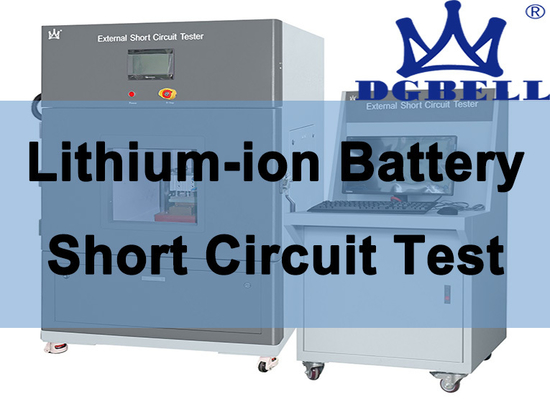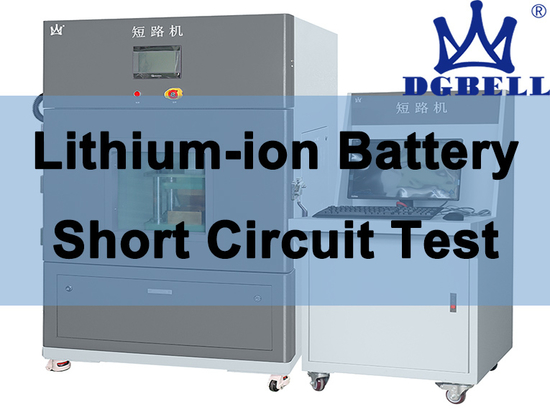
#Industry News
Lithium Battery Impact Test
Lithium Battery Impact Test
Due to the advantages of light weight, high voltage, high electrochemical equivalence, and high conductivity of metal lithium, lithium primary batteries composed of metal lithium as the negative electrode have the advantages of high specific energy, high battery voltage, wide operating temperature range, good low-temperature performance, and long storage life. Lithium primary batteries for chemical systems have been commercialized.
However, due to the high activity of lithium, the safety of lithium primary batteries has become a noteworthy issue. Certain organic electrolyte batteries and non aqueous inorganic electrolyte lithium batteries may explode under short-circuit or other abusive conditions. Therefore, analyzing the reasons for the explosion of lithium primary batteries has practical guiding significance for improving the production process of batteries and enhancing their safety.
The heavy object impact test for lithium primary batteries is specified in many battery testing standards (such as IEC 62281, UL 1642, UN 38.3). This experiment simulates the abuse of a certain weight object falling onto the battery, generating a strong impact force at a certain part of the battery. When the battery is subjected to sudden impact, it may experience internal short circuits or other exothermic reactions, and even catch fire or explode.
The international standard for lithium batteries, IEC 62281, states that the purpose of heavy impact testing for lithium primary batteries is to simulate internal short circuits in batteries. In this article, six different types of button batteries are used as samples for heavy impact testing to analyze the causes of ignition and explosion phenomena in batteries during heavy impact testing.
1 Experiment
1.1 Instruments and Materials
DGBELL explosion-proof impact chamber. The experimental subjects were 5 normal button batteries, 5 battery samples containing only positive electrode material electrolytic manganese dioxide and electrolyte, 5 batteries containing only negative electrode material lithium and electrolyte, 5 batteries containing only electrolyte, 5 batteries containing only positive electrode material, and 5 batteries containing only negative electrode material, totaling 6 types of samples.
1.2 Experimental Methods
Conduct a heavy object impact test according to the conditions specified in the standard “IEC 62281 Safety Requirements for Lithium Primary Batteries and Batteries in Transportation”. The specific conditions are as follows: the sample battery or battery pack is placed on a flat surface. A rod with a diameter of 15.8 mm is placed horizontally at the center of the sample. A 91 kg heavy hammer fell from a height of 61 ± 2.5 cm onto the specimen.
The longitudinal axis of the impacted cylindrical or prismatic battery should be parallel to the flat surface and perpendicular to the longitudinal axis of the curved surface with a diameter of 15.8 mm placed horizontally at the center of the specimen. The prismatic battery must also be rotated 90 ° around its longitudinal axis in order to withstand impact on both its wide and narrow sides. Each specimen is subjected to only one impact. When a coin shaped or button shaped battery is subjected to impact, the plane of the sample should be parallel to the flat surface, and a curved surface with a diameter of 15.8 mm should be placed horizontally at its center. Test temperature: (20 ± 5) ℃.
2 Result
2.1 Test results
Six battery samples showed different test results in heavy object impact tests. During the heavy object impact test, it was discovered through surveillance cameras that some battery samples generated bright “sparks” in an instant, causing the battery to be smashed in half.
The characteristics of spark generation are:
(1) Sparks are relatively bright;
(2) Sometimes accompanied by a slight burst sound;
(3) Basically, it occurs simultaneously with the impact of a heavy object;
(4) Only normal batteries show sparks during the test;
(5) The duration is relatively short, usually stopping immediately after the battery is hit.
Lithium primary batteries containing only negative electrode materials and electrolytes, as well as lithium primary batteries containing only negative electrode materials, generate “sparks” during the impact process in some batteries. However, normal lithium primary battery samples generate “sparks” during the impact process, and the temperature rise is relatively large.
2.2 Reason
Based on the working principle of lithium-manganese dioxide batteries and experimental results, it is speculated that the reason for the “spark” generated during the impact process:
(1) the combustion of lithium at high temperatures is manifested as the “spark” generated in some or all types of battery samples containing metallic lithium during the impact test. Li has high chemical reactivity and can spontaneously ignite in the air when heated to a molten state. Its dust can also burn at room temperature.
The heavy hammer fell from a height and hit the surface of the battery sample, instantly generating a large amount of heat, causing the lithium sheet exposed in the air due to battery cracking to react with oxygen in the air and generate sparks. During the production process of batteries, lithium sheets exposed to air will not react with a small amount of moisture in the air. Therefore, in this experiment, Li reacts with water to release hydrogen and heat, and the possibility of combustion is very low.
(2) The internal short circuit between the positive and negative electrodes is manifested as a normal lithium primary battery generating “sparks” during the impact process. After the impact, the internal short circuit of the battery occurred due to the compression and rupture of the diaphragm. When an internal short circuit occurs, a large amount of current flows through the battery, causing it to generate a significant amount of Joule heat. The generation of heat causes local heating to appear inside the battery, leading to thermal runaway inside the battery and ultimately causing a fire and explosion. It can be seen that both of the above reasons may cause “sparks” in the impact process of finished lithium primary batteries, which explains why the probability of “sparks” in the impact test of finished lithium primary batteries is higher.
3 Conclusion
The reason for the ignition and explosion phenomenon of lithium primary batteries during heavy object impact tests may be not only due to internal short circuits in the battery, but also due to the high-temperature combustion of internal lithium.







